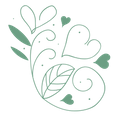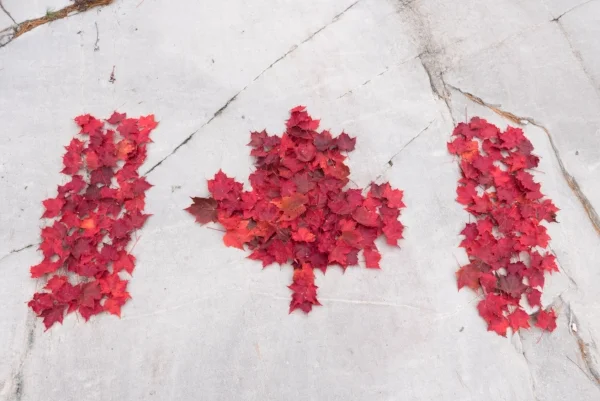What Canada Can Be
Every Forest Therapy walk that I guide starts with an acknowledgement of the land and indigenous peoples that have walked here before us. As Canada Day approaches, the weight and importance of this topic is at the forefront of my mind.
In timely synchronicity, this special piece of writing on the topic of land acknowledgement and how we can move forward as Canadians was recently written by one of my most influential yoga teachers, Emma Dines. Copied from the Queen Street Yoga blog, her original piece can be found here.
Emma Dines delivering a land acknowledgement to a thoughtful group before commencing their Yoga in the Park practice in downtown Kitchener.
At the start of June, I began our Wednesday Yoga in the Park sessions with a land acknowledgement.
I asked people to gather together near my mat, and I acknowledged that we all live and work on the traditional territory of the Neutral, Anishnaabe and Haudenosaunee peoples. And that a land acknowledgement is only the first step in growing awareness and beginning to redress the harm that has been done and continues to be done to the land and the First Nations people.
I was nervous. I am always nervous to do a land acknowledgement.
I think I am nervous for several reasons. One is that I am afraid people might be angry that I am bringing a political issue into a space where they might not have been expecting it. Another is that I am afraid I will somehow do it wrong, say it in a way that somehow shows my ignorance about the issues. Should I say First Nations or First Peoples? Should I say Indigenous or something else?
But these things make the land acknowledgement about me. About my comfort level, about not upsetting people.
As I looked around at the people gathered for yoga in the park, I saw many of them nodding their heads. I saw more recognition and understanding in their eyes than I did several years ago when I began doing land acknowledgements.
My voice picked up and I spoke about how this land that we live on is what sustains us, that we all love to come outside because we are reminded of how the earth feeds us, the air breathes us, the sun grows us, and the trees shade us.
We stood under the trees for a moment together, listening to the wind in the leaves.
A land acknowledgement is not about me or my comfort level. It is about beginning to shift our culture to look squarely at what has happened as a result of our colonial history and what the impacts continue to be. It is about getting used to speaking about things that are uncomfortable. It is about getting it wrong as many times as it takes for us to learn and figure out how to respond better. It is about bringing the political into more areas of life, including yoga in the park.
I have been reading the book “One Native Life” by Richard Wagamese, an Ojibwe writer. As Canada Day approaches I am inspired by what he wrote about an experience he had raising the Canadian flag in 1965 as the only Native person in the town of Bradford.
“The band struck up the first notes of O Canada. My hands grasped the lanyard. As the song began to swell, I hauled on that rope. The flag inched up the pole, then caught in the breeze, fluttered and began to wave. As I watched it gain the sky I did feel honoured. I was filled with a crazy sense of possibility, as if that flag could make anything happen.
Right then, I believed that Canada was a wish, a breath waiting to be exhaled. I believed that the song was a blessing, the flag its standard. I believed, as I had been told by my teacher, that my people were special, that I was special and that the blessings of the flag fell equally on my shoulders. The true north, strong and free.
Since then I have learned that the national anthem can be a dirge at times, a wail, a cry in the night. I have learned that hidden in the thunder of the trumpets and the snap of the drums are common voices hollering to be heard. The flag is a symbol of the separation between red and white. It’s hugely ironic because of that.
But I love this country. I love that flag. The majority of native people do. Every land claim, every barricade, every protest is less a harangue for rights and property than it is a beseeching for the promise offered in that flag, represented by it. Equality. A shared vision, a shared responsibility. A wish, a held breath waiting to be exhaled.”
This Canada Day, may we continue to enlarge our understanding of what Canada is, what it has been, and what it can be.
With care,
Emma
Emma Dines is the creative director of Queen Street Yoga in Kitchener, Ontario. She loves writing, visiting thrift stores and going for walks in the woods. She also loves cartwheeling, sewing and making her own kimchi.


